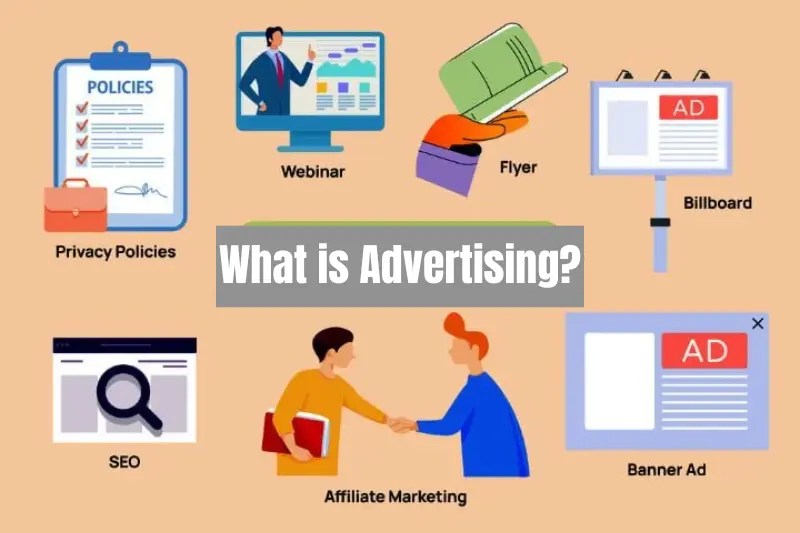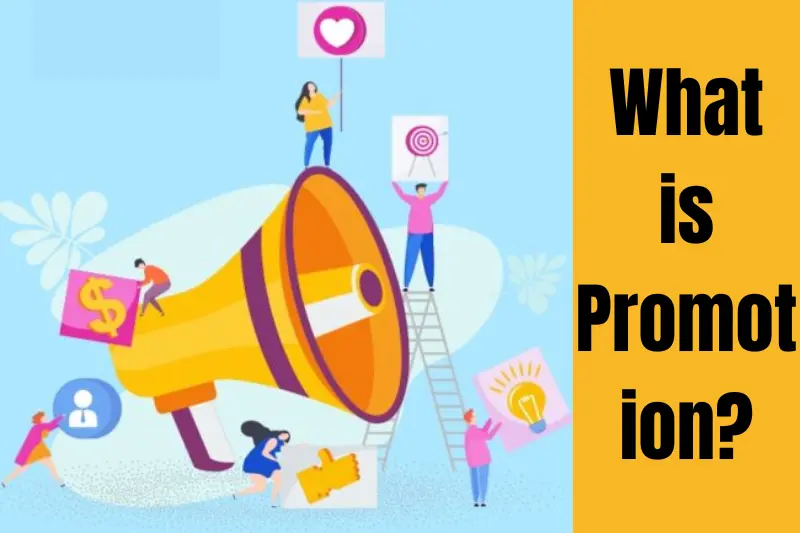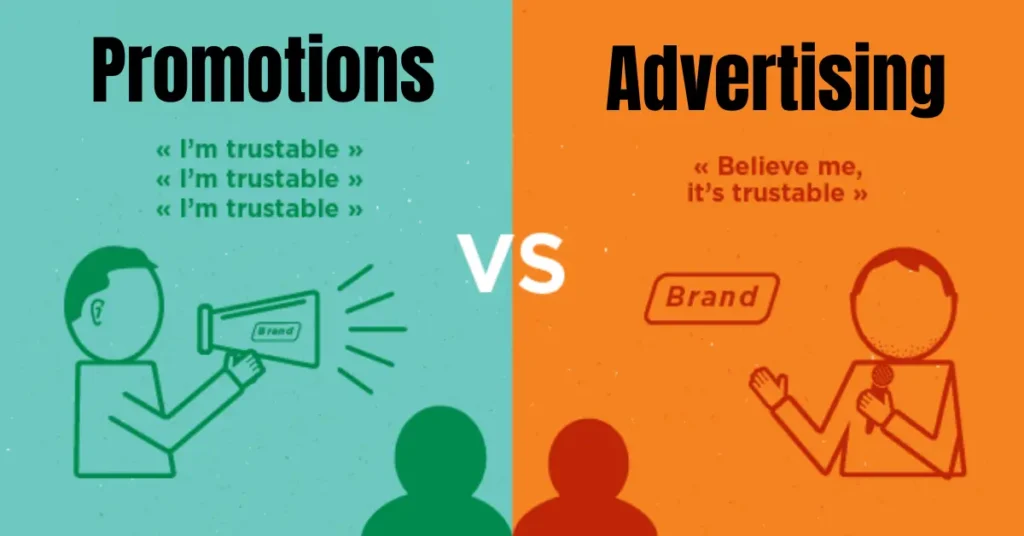Introduction:
In today’s competitive market, businesses are constantly seeking ways to reach customers and boost sales. Two of the most commonly used marketing tools are promotions and advertising, but many people use these terms interchangeably, even though they serve very different purposes. Understanding promotions vs advertising is essential for crafting effective marketing strategies that drive measurable results. While advertising helps build long-term brand awareness, promotions are designed to create immediate impact and stimulate business growth. Knowing when and how to use each can make the difference between a successful campaign and wasted resources.
What is Advertising?

Advertising is a strategic method used by businesses to communicate their brand, products, or services to a wide audience. Its main goal is to build long-term brand awareness and establish a strong presence in the market. Unlike short-term promotional tactics, advertising focuses on consistently shaping the perception of your brand over time.
Common advertising channels include:
- Television and radio commercials
- Social media ads on platforms like Facebook, Instagram, and LinkedIn
- Print media such as newspapers and magazines
- Online display ads, search engine marketing, and sponsored content
Effective advertising not only informs potential customers about a product or service but also helps create trust and credibility. For companies looking to grow sustainably, integrating advertising into broader marketing strategies is essential.
Related keywords included naturally: types of advertising, advertising strategies, brand promotion
What is Promotion?

Promotion refers to marketing activities designed to generate immediate interest in a product or service and encourage quick customer action. Unlike advertising, which focuses on long-term brand building, promotions are typically short-term and aimed at driving sales growth quickly.
Common promotional tactics include:
- Discounts and special offers
- Coupons and vouchers
- Contests and giveaways
- Limited-time bundles or packages
Promotions are particularly effective for attracting new customers, clearing inventory, or boosting engagement during seasonal campaigns. When used strategically, promotions complement advertising efforts by providing a tangible incentive for customers to take action.
Related keywords included naturally: sales promotion, promotional campaigns, marketing promotions
Key Differences Between Promotions and Advertising
While both promotions and advertising are essential marketing tools, they serve different purposes and are applied in distinct ways. Understanding their differences helps businesses allocate resources effectively and design marketing strategies that drive both short-term and long-term growth
| Feature | Advertising | Promotion |
|---|---|---|
| Goal | Build brand awareness and reputation | Increase immediate sales and customer engagement |
| Duration | Long-term | Short-term |
| Channels | TV, social media, print, online ads | Coupons, discounts, contests, giveaways |
| Cost | Often higher due to production and placement | Usually lower, focused on incentives |
| Focus | Brand image and perception | Product or service sales |
Key Takeaways:
- Advertising builds a brand over time, while promotions aim for instant results.
- Promotions are often tactical and flexible, whereas advertising is strategic and consistent.
- Combining both can maximize impact, reinforcing brand recognition while boosting immediate sales.
Related keywords included naturally: marketing techniques, promotional vs advertising, marketing comparison
When to Use Advertising vs Promotion
Knowing when to use advertising and when to use promotions is crucial for creating an effective marketing strategy. Each serves a different purpose and can impact business growth in unique ways.
When to Use Advertising:
- To build long-term brand awareness and credibility
- When launching a new product or service that requires audience education
- For maintaining a consistent brand presence in the market
- When targeting a wide audience across multiple channels
When to Use Promotion:
- To boost short-term sales or clear excess inventory
- During seasonal campaigns or limited-time offers
- To attract new customers with incentives such as discounts or contests
When encouraging repeat purchases from existing customers
Combining Both Strategies:
For maximum impact, businesses often combine advertising and promotions. For example, a company may use advertising to introduce a new product and run a promotional campaign alongside it to encourage immediate purchases. This integrated approach ensures both brand growth and tangible sales results.
Related keywords included naturally: marketing strategy tips, effective advertising, sales promotions strategies
Conclusion
Understanding the difference between promotions vs advertising is essential for any business aiming to achieve both immediate sales and long-term brand growth. Advertising helps build brand awareness, credibility, and a loyal audience over time, while promotions drive short-term engagement and boost sales quickly. By strategically combining both approaches, businesses can create a balanced marketing strategy that supports sustainable business growth.
Start planning your campaigns today by evaluating your goals and deciding when to invest in advertising, when to run promotions, and how to integrate both for maximum impact. A well-thought-out approach ensures that every marketing effort contributes to your brand’s success.
Related keywords included naturally: marketing success, advertising vs promotion, business growth strategy

